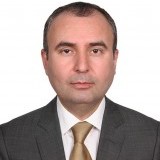Three calls for Central and Eastern Europe in 2022
Sticky inflation, politics and Turkey's quest for growth will be some of the hottest themes for the CEE region in 2022
Second-round effects a much greater threat to Central Europe
The peak in CE3 headline inflation should be reached somewhere between December (Poland) and the first half of next year (Hungary, Romania). What we really want to emphasise is that core inflation will stay elevated even when headline CPI slows on base effects. Here, labour costs and demand pressures are expected to take a leading role in driving inflation in 2022-23 as opposed to 2021 when supply shocks were mainly responsible for elevated CPI.
Central European economies face a much greater risk of second-round inflation effects than developed economies. And with these economies growing close to potential in 2022, labour scarcity is a real constraint in both, although this is less the case in Romania. The strong bargaining power of employees poses an upside risk for wages, which may grow at double-digit levels in 2022.
More political and geopolitical risk
The CEE region is facing a lot of political and geopolitical risks next year, maintaining a high level of uncertainty. The rule of law debate is far from over in Hungary and Poland. Things could get more complicated with the incoming new German government. Hungary is also facing a general election in April with the tightest race in decades. In Poland, elections are scheduled for 2023, but given the complicated situation within the ruling coalition, an earlier vote is becoming more likely. Additionally, a compromise between Poland and the EU in the judiciary dispute still seems far off. However, the government may start some of the projects from the Recovery Plan even with EU funding still frozen. This may require extra local funding.
Geopolitical issues are present, too, as Russia flexes its muscles and there is tension on the EU-Belarus and Russia-Ukraine borders. The approval of its Nordstream II pipeline, and Europe’s gas shortage, looks inextricably linked to tension in the region.
Turkey’s quest for growth
The Turkish government’s implementation of a new policy, with the participation of the central bank, has seen major fluctuations in local financial markets over recent weeks. Policymakers seem to be targeting investment by lowering interest rates while allowing the Turkish lira to weaken. Accordingly, policymakers expect a recovery in the current account, driven by higher exports and controlled imports. These measures are intended to support Turkey’s external debt stock.
However, the implications of these policy measures for topics such as dollarization, the path of inflation, the fiscal balance, capital flows, and growth will also very much be in focus in 2022. Given this backdrop, the continued implementation of this current policy line will likely be closely followed by market participants.
This publication has been prepared by ING solely for information purposes irrespective of a particular user's means, financial situation or investment objectives. The information does not constitute investment recommendation, and nor is it investment, legal or tax advice or an offer or solicitation to purchase or sell any financial instrument. Read more
Download
Download article
2 December 2021
ING global outlook 2022 This bundle contains 17 Articles




